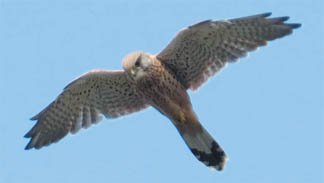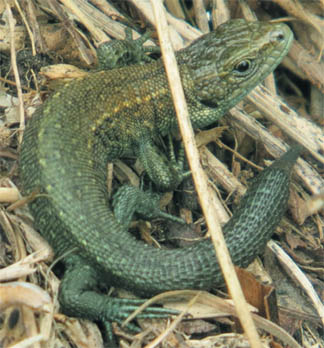| Wildlife
Newsletter for the Township of Dalkey October 2015 - Michael Ryan |
| Spread
of the Red – In August the Killiney Red Squirrel Facebook page received a report and some charming photographs of a red squirrel that was coming to eat at a peanut bird feeder in a garden at Beacon Hill off Sorrento Road though it was later driven off by a grey. Later there was another report of a red coming to another feeder in a nearby garden on Nerano Road and subsequently we heard of a red crossing Strathmore Road on the far side of Killiney Hill. Squirrels will travel long distances even in a day and if they find a easy food source will avail of it. We’d seen a couple of reds in the park taking advantage of the early beech seed crop but it’s very encouraging if they’re spreading out into adjoining gardens. Our neighbours on Knocknacree Road had red squirrels actually going into their roof only 15 years ago and that was the only time I’d ever seen a red in my own garden running along the top of our conifer hedge. For updates, photographs or to report sightings please check the Killiney Red Squirrel Facebook page. |
|
|
Small
Tail – Lucy was still spotting large numbers of grasshoppers
on the hill in the same area but a small dark shape darting through
the grass made her jump back a few steps. It was a lizard. I’d
seen one near the railway line many years ago but never seen any on
the hill before. Subsequently in the same spot we saw similar individuals
on a number of occasions, though being only a few inches long and very
dark they were difficult enough to spot. One small dark individual had
a shorter, stumpier, tail then the others long tapering tails and it
would seem that it had put into practice one of the lizards few defences
against predators. When attacked the lizards can shed their tail and
the dismembered bit remains wriggling to distract the predator. The
tail will eventually regrow again and it looked like that was what washappening
with this individual. We were looking at this beautiful little creature then Lucy saw a sight that made her take another big step backwards. The lizards we’d being seeing before were juveniles but we were now looking at a much more impressive adult with three young lizards beside it all fairly oblivious and undisturbed by us, a wonderful sight. Lizards can’t regulate their own body temperature and come out in to the sunlight to warm up. |
This
is when they are most vulnerable to predators, cats being a major source
of lizard fatalities but a number of birds (including kestrels) will
also take them. The common or viviparous lizard (Zootoca vivipara) is
Ireland’s only native reptile, the nearest thing we have to a
snake though, of course, lizards are totally harmless. Many reptiles
lay eggs but lizards give birth to live young. Coincidentally the Irish
Wildlife Trust have just begun a survey of Irish lizard populations.
If you have any sightings you can send them to iwtresearch@gmail.com. 
Kestrel over Dalkey Hill, maybe looking for lizards Photo: M. Ryan |
 Juvenile lizard on Dalkey Hill, this one probably lost the end of his tail which will regrow. Photo: M. Ryan |